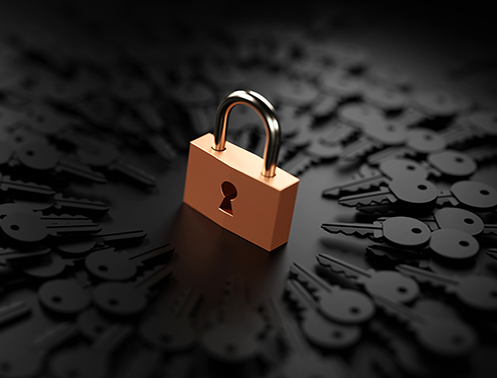Feb 16, 2021 – As a financial professional, you’ve almost certainly talked with your clients about their estate planning. One area you may not have considered—but should—is their digital assets. As people live more of their lives online, many now have significant digital assets, things like social media accounts, passwords, cryptocurrency, even hardware, that need to be considered as part of their estate planning.
Some of these assets may have financial value, like domain names, online stores, or content that generates revenue. Others may have sentimental value, like personal photos or videos that are stored online. And some may pose a financial risk to a client’s estate if they’re ignored, like e-commerce accounts or utilities that have financial information and credit cards linked to them. In all cases, clients need to think through how those assets should be handled.
Currently, the laws for how digital assets should be handled are not clear in most states, and companies that handle this information can have very different policies when a customer dies. (For example, Facebook and Google allow users to designate someone to take over the account after they die.1) Your clients will need to talk to a lawyer for any formal changes to their wills, but they will be far better prepared for that process if you’ve helped them get their digital assets organized.2 Moreover, you can demonstrate your value to your clients and build trust by recognizing this as a common problem that many clients likely face—and helping them solve it.
There are a few critical steps to organizing digital assets.
Make a list.
First, clients need to identify their digital assets. That entails making a list of all digital assets—online banking accounts, social media accounts, email, online storage, and hardware like phones, laptops, or external hard drives.3 Most critical is that you write down all login information and passwords for every account. They should also include the full name on the account—that may be their name, a spouse’s name, both names, or a business name.2 (Many people use a password manager to generate and track all of their passwords; in those situations, clients need to record just a single master password for that program, which will give loved ones access to everything else.)
Give explicit guidance about each asset.
Next, they should go through each asset and determine how they’d like it to be handled. They may not want to give a blanket authorization that gives complete access to all accounts.4 For example, if they have an online diary or unfinished creative work on a hard drive, they may want those files to be destroyed. They may also want photos and videos to be duplicated and passed along to multiple family members. And any accounts that have financial information stored—like shopping sites—should be shut down.
Consider appointing a digital executor.
In addition to the executor of their estate, the client may want to designate another person specifically to handle digital assets—a so-called digital executor. This may be someone who’s computer- or social media–savvy and understands how to take specific steps to close accounts, move digital media files, and take any other steps the client designates as necessary. Note—the digital executor role isn’t recognized by law; it’s an informal designation.3
Document this information and keep it in a safe place.
All information about digital assets should be stored in a location that’s safe but also accessible to the person (or people) who will need it after the client is gone. Some opt to store this information in a jointly accessible account online, or they give a printout to their estate lawyer. Some financial professionals give their clients a digital vault to store important information like estate planning documents, property deeds, and digital copies of other critical paperwork.5
Most importantly, this information should not be formally entered into a will, as that becomes a public document in many states upon a person’s death. It should be maintained as a separate document.3 If the client opts to store this information on a cloud-based account, they should also back it up by storing it on a local device, like a laptop or an external hard drive.
Follow up regularly.
Even more than traditional and financial assets do, digital assets change over time—and the laws regarding how these assets should be handled are changing rapidly as well.4 For this reason, clients should update their documents and preferences regularly.
Organizing digital assets isn’t easy, and it’s something most financial clients likely wouldn’t do on their own. But given the growing importance of this information, financial professionals can provide a critical service by helping clients through the process. Digital technology has changed just about every aspect of modern life. It changes estate planning too, and clients need to be prepared.
1 Michelle Kaminsky, “Estate Planning: 121 Things to Do Before You Die,” LegalZoom.com, Sept. 4, 2020.
2 Bob Carlson, “How to Make Your Digital Life Part of Your Estate Plan,” Forbes.com, Nov. 14, 2019.
3 “Digital Cheat Sheet: How to Create a Digital Estate Plan,” Everplans.com, Accessed Feb. 2, 2021.
4 “Estate Planning for Digital Assets,” Fidelity.com, July 22, 2020.
5 Robert Powell, “Don’t Leave Grieving Relatives Searching for Your Passwords: Here’s How to Organize Your Digital Life Before You Die,” USAToday.com, Nov. 25, 2020.
CSC-0622-2226755-INV-E


